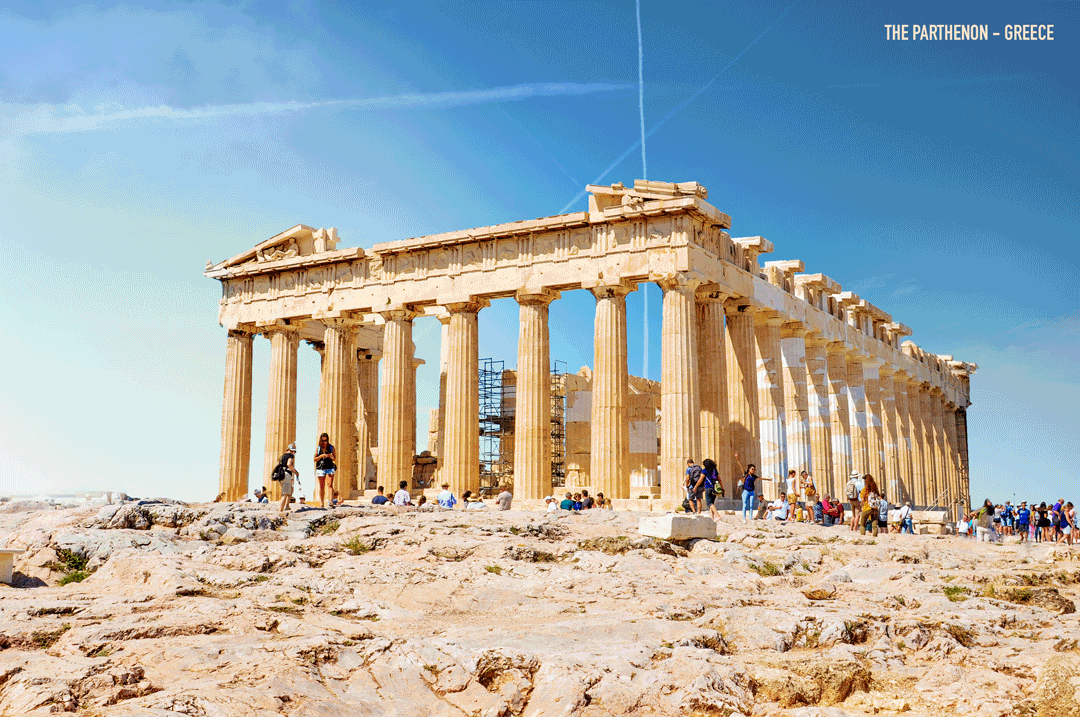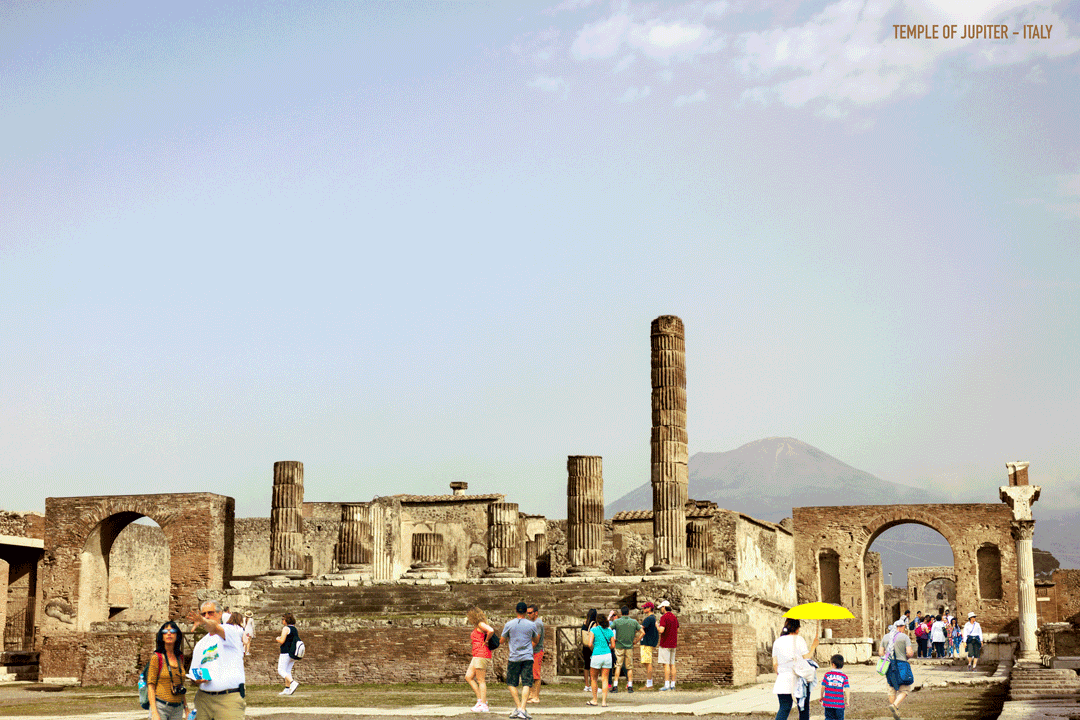🏛️ Ancient Ruins 🏛️
As They Would Have Looked In Their Prime
From the unmatched wonder of Cambodia’s Angkor Wat to the sprawling majesty of the temples of Bagan in Myanmar (aka Burma). From Egypt’s Great Sphinx of Giza to the extraordinary carved city of Petra in Jordan. These remnants of the ancient world have long cast a spell over travelers from every corner of the globe.
In fact, a quick check of any ‘most popular tourist attractions in the world’ list (note attractions, not cities) will likely throw up more ancient man-made sites than modern attractions or natural wonders, with Machu Picchu, the Great Wall of China, the Acropolis and Rome’s Colosseum regular contenders for the top spot.
People’s interest is clear. We’ve long been fascinated by our past as and how it shapes our future – how people lived, what technologies they had, what their homes and public spaces looked like and just how they built these extraordinary edifices without modern machinery.
But it’s often tough to really get a sense of what these ancient buildings would have looked like in their
heyday - many were resplendent in gold and other finery, intricately carved and finished with elements no modern tourist can ever see and would struggle to imagine.
The Parthenon

Casting views from the hilltop at the Acropolis citadel in Athens, Greece, the Parthenon is a true ancient wonder whose Doric architecture has been ravaged by time and war. Its cavernous halls once held a huge golden statue of Athena, the Greek goddess of wisdom, craft and (ironically) war.
Nohoch Mul Pyramid, Cobá

The Mayans built some amazing stuff before the Spanish conquistadors spoiled the party, with pyramids to rival those of Egypt. Cobá, set deep and remote in the Mexican state of Quintana Roo, was settled some time between 100 BC and 100 AD and occupied right up until 1550. Amid the thick jungle, extraordinary caves and natural pools are dotted many temples, with Nohoch Mul the tallest at 137 feet. Rediscovered in the 1800s and only accessible to the public since 1973, it remains one of the most extraordinary insights into the tenacity of ancient humans to leave their mark anywhere in the world.
Temple of Jupiter

From a few broken columns to its original splendor, the Temple of Jupiter.
As its name suggests, this temple was built in honour of Jupiter, the Roman god of sky and thunder, on the Bay of Naples in a thriving city called Pompeii. Modern man may think they didn’t do a good enough job though, as it was buried beneath the wrath of nearby Mount Vesuvius in 79AD in what remains the most famous volcanic eruption in history. Rediscovered in the 16th century, it took many years of excavation to uncover its limited remains.
Milecastle 39, Hadrian’s Wall

Britain’s lesser known ‘great wall’ was a monumental Roman achievement - 73 miles of border cut through the English countryside dating back to the first century AD. Built (we think) to secure Roman Emperor Hadrian’s grip on the island nation and its pesky inhabitants, it had forts known as Milecastles built at each Roman mile along its length. All but gone now, this gives us a glimpse into how they would have looked.
Luxor Temple

One of the most recognisable names connected to ancient architecture, Luxor takes its name from the Arabic for fortification – al-Uqsur – and has been a sacred site since its commission in 1380BC by Amenhotep III. It was renovated and updated a century later by Rameses II who added a great pylon gateway and courtyard, connected to the nearby Karnak Temple by an avenue of sphinxes to guard it. An iconic structure in a country filled with them.
The Pyramid of the Sun, Teotihuacán

A genuine modern day mystery, we know Teotihuacán was one of Mexico’s first urban centres sometime between the first and seventh centuries CE but we don’t know much about who built it or who lived there. Of its many extraordinary and mysterious structures, The Pyramid of the Sun is by far the largest – an ancient, man-made mountain.
Temple B, Area Sacra di Largo Argentina

Built in Italy not Argentina as the name may suggest, this gorgeous central Roman square once housed four exquisite temples. The most recently discovered (and least romantically named) Temple B was found in the 1920s and still has six columns and the original steps and altar intact. Perhaps most famous as the place where Julius Caesar uttered his immortal accusation, ‘Et tu, Bruté?’, as he was stabbed to death, it’s one of the lesser known but more remarkable sites from the Roman civilization, and isn’t often open to visitors.
- https://viewfinder.expedia.com/7-ancient-ruins-around-world-reconstructed/?affcid=network.cj.100090393.10581071.82526X1534134X47ece04ee817ebba51abcfb1bdf7370b&cjevent=713aba0bb83911eb801e4aea0a82b836
- https://www.forbes.com/sites/duncanmadden/2018/03/22/see-seven-ancient-wonders-as-they-would-have-looked-in-their-prime/?sh=7e4f773c7341
- https://laughingsquid.com/ancient-ruins-visually-reconstructed/
- https://viewfinder.expedia.com/7-ancient-ruins-around-world-reconstructed/?affcid=network.cj.100090393.10581071.82526X1534134X47ece04ee817ebba51abcfb1bdf7370b&cjevent=713aba0bb83911eb801e4aea0a82b836
- https://www.dailymail.co.uk/news/article-5566391/How-seven-ancient-ruins-world-look-like-reconstructed.html
Amazing Historical Buildings Reconstruction
👇 📺 👇
👇 📺 👇
In this video you are going to see some of the amazing historical buildings Digitally Reconstructed ,,,
Expedia’s NeoMan project, created in collaboration with Maja Wrońska and Przemek Sobiecki from “This Is Render”, gives us a unique opportunity to travel back in time and explore the original structures before they were damaged by centuries of natural decay. This creative team reconstructed 7 famous ancient buildings in 3D animations, bringing us back hundreds of years, slowly showing how they were built up into the magnificent structures that they once were. Scroll down to see those stunning ancient engineering works for yourself.
Expedia’s NeoMan project, created in collaboration with Maja Wrońska and Przemek Sobiecki from “This Is Render”, gives us a unique opportunity to travel back in time and explore the original structures before they were damaged by centuries of natural decay. This creative team reconstructed 7 famous ancient buildings in 3D animations, bringing us back hundreds of years, slowly showing how they were built up into the magnificent structures that they once were. Scroll down to see those stunning ancient engineering works for yourself.
🏛️ 🏛️ 🏛️ 🏛️ 🏛️ 🏛️ 🏛️ 🏛️
🏛️ 🏛️ 🏛️ 🏛️ 🏛️ 🏛️ 🏛️ 🏛️
If 7 Famous Historical Buildings
🏛️ 🏛️ 🏛️ 🏛️ 🏛️ 🏛️ 🏛️ 🏛️
If 7 Famous Historical Buildings
Were Brought Back To Their Ancient Glory
👇 📺 👇
Countries like Greece, Italy, Egypt, and Mexico are famous for some of the most fascinating historical monuments in the world. Sadly, not all of them have managed to survive the cruel wheel of time, and after so many centuries the only thing left to remind us of them are their ruins. But have you ever tried to imagine how those architectural wonders, such as Parthenon in Athens, Mexico’s Pyramid of the Sun, or Italy’s Temple of Jupiter, looked in all their glory?
🏛️ 🏛️ 🏛️ 🏛️ 🏛️ 🏛️ 🏛️ 🏛️
https://youtu.be/VbM1QEjrApE
🏛️ 🏛️ 🏛️ 🏛️ 🏛️ 🏛️ 🏛️ 🏛️



No comments:
Post a Comment